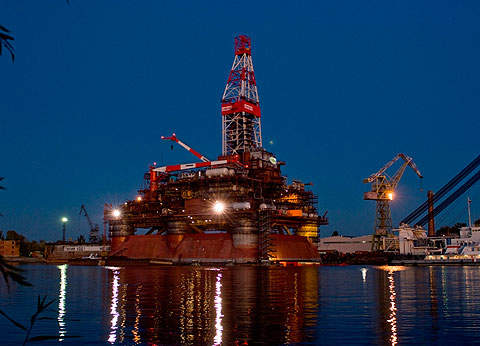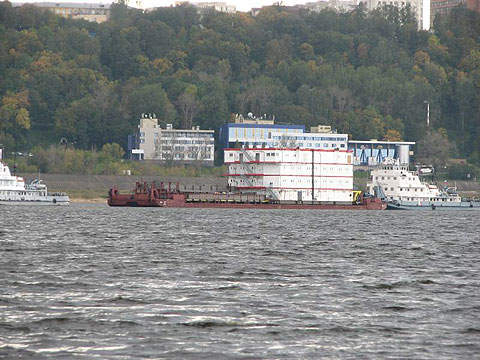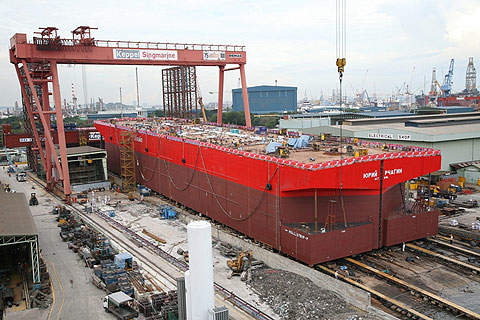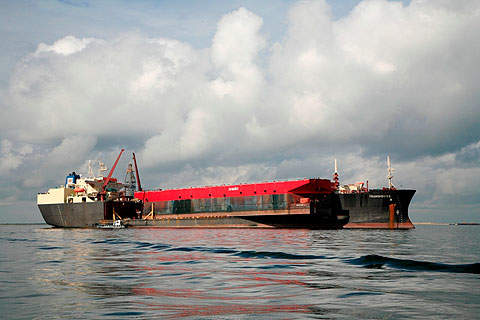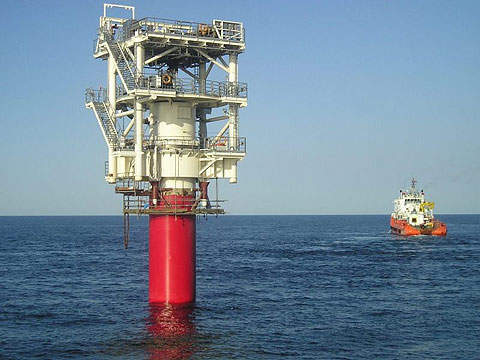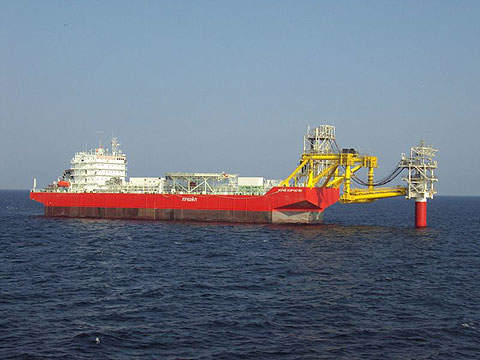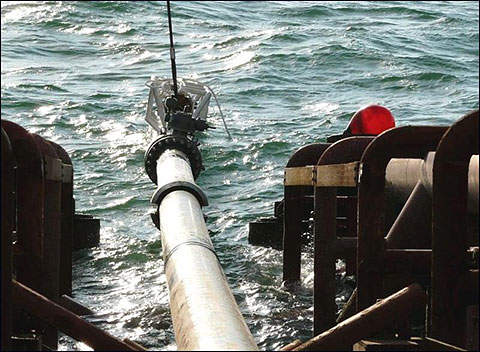The Yuri Korchagin field is located in the Russian waters of the North Caspian Sea at a water depth of 11-13m. It is located 180km from the city of Astrakhan and 240km from Makhachkala.
The field was discovered by Lukoil in 2000 and is owned by its subsidiary Lukoil Nizhnevolzhskneft. The field is being developed in two phases.
First oil for phase one was extracted on April 2010, while the second phase has been underway since 2017 and is expected to be completed by 2019.
The proved, probable and possible hydrocarbon reserves in the Yuri Korchagin field are estimated to be around 570 million barrels of oil equivalent.
Lukoil expects to extract 2.5 million tonnes of oil and one billion cubic metres of gas per year. In 2010, the output was expected to be 343,000t of oil.
Lukoil spent R34.4bn ($1.12bn) on field development between 2004 and 2009. The field was named after the former secretary of the company’s board of directors.
In October 2010, first oil from the field was loaded on to the Caspian Stream tanker.
Yuri Korchagin wells
The first development phase of Yuri Korchagin field covers 30 wells, comprising 26 production wells, one gas-injection well and three water-injection wells. Two wells were drilled at the time of the field’s commissioning in April 2010. The first was an oil production well and the second was drilled to extract gas to supply power to the facility.
A third well, for water injection, was drilled during the second quarter of 2010.
In a unique engineering procedure, the wells were drilled horizontally to a length of approximatively 5km.
The radial placement of the wells enables their simultaneous drilling. The drilling process is monitored through a satellite channel from onshore.
Offshore platform for Yuri Korchagin phase one
A fixed offshore ice-resistant platform (LSP-1) is the main production facility at the Yuri Korchagin field. It drills, collects and transports hydrocarbons from the field.
The LSP-1 is 95.5m long, 72.2m wide, weighs 25,655t and is 86.6m above sea level. The platform was built at the Astrakhansky Korabel plant. It was towed to the field from Astrakhan in July 2009 and was assembled during the third quarter of that year.
The platform houses a 560t drilling complex and two cranes. It can drill wells up to a depth of 7,400m and the two cranes have a load capacity of 70t.
An additional platform, named LSP-2, provides accommodation to the field’s personnel. The platform is 41.5m long, 40.2m wide, weighs 1,340t and is 38m above sea level. Equipment was assembled at the Astrakhan Shipyard.
LSP-2 was towed to the field and the topside assembled in May 2009. The topside includes living quarters for 105 personnel, a medical facility, store rooms, ship repair and service facilities, a helideck and rescue equipment. The platform can self-sustain for 15 days.
LSP-1 and LSP-2 are connected by a 74.2m-long bridge. The bridge was assembled in August 2009, marking the completion of work on the offshore facility.
Lukoil claims that the results of satellite monitoring the North Caspian Sea showed that there were no oil spills during the assembling of the platform.
Yuri Korchagin phase two details
Construction work on the second phase of the project in the Eastern part of the Yuri Korchagin field began in 2017.
The second phase includes construction of one wellhead conductor-platform, along with a 9km-long multi-phase intra-field oil pipeline, which will supply the oil produced at the phase two platform to the main production platform (LP-1) of Yuri Korchagin phase one.
Installation for the topside of the wellhead platform for the second phase was completed in April 2018.
Drilling of the first single-bore production well with horizontal completion from the wellhead platform was performed using a jack-up rig until July 2018 and the flow rate was 500t of crude oil a day. The well has a water depth of 5,217m.
The second production well was drilled up to 3,736m and was completed by November 2018, it has an initial capacity of 600t of crude oil a day.
The second phase of the Yuri Korchagin project also aims to increase the capacity of the first phase by constructing a 1,408m-long sidetrack in the 14th production well of the first phase.
Electricity for phase two will be supplied from the first-phase platform via power cables.
Floating storage unit and oil supply facility
The storage unit lies 58km away from the production platform, outside the ice zone of the Caspian Sea. It is connected to the IRP-1 via a subsea pipeline. The unit has a deadweight of 28,000t and was built in Baku.
The floating storage unit is moored to a single-buoy mooring (SBM). The SBM is assembled at a sea depth of 20.5m and rises to 27.2m above sea level.
The 1,725t SBM is fixed to the sea bed with five piles of 2,130mm diameter each.
The SBM-floating storage unit is connected to the offshore platform via a 58km-long pipeline, which has a diameter of 300mm and a wall thickness of 16mm.
Hydrocarbons from the storage unit are supplied onshore to Makhachkala via shuttle tankers that weigh 6,000t to 12,000t.
At Makhachkala, the oil is fed into the Makhachkala Novorossiysk pipeline, which is operated by the Azerbaijan state-owned company SOCAR along with Russia-based Transneft.
Contractors involved with the field development
Moscow-based drilling company BKE Shelf was responsible for the drilling work.
J Ray McDermott was awarded the engineering, procurement and construction contract by Lukoil in January 2007 for the 58km-oil pipeline connecting SBM to the LP-1.
J Ray McDermott also completed the installation of the production platform for the Yuri Korchagin phase one development project, while Stroytransgaz was responsible for the construction of the technological complex for the platform.
The LSP-2 was constructed at Lukoil-Kaliningradmorneft’s hardware factory.
Satellite monitoring is carried out by the Research and Development Center ScanX to trace pollution in the Caspian waters.
The fixed ice-resistant platform was provided by Russia-based United Shipbuilding (OCK) for the first development phase of the Yuri Korchagin field.
UK-based Tendeka provided autonomous inflow control devices for the production wells at Yuri Korchagin phase one.

